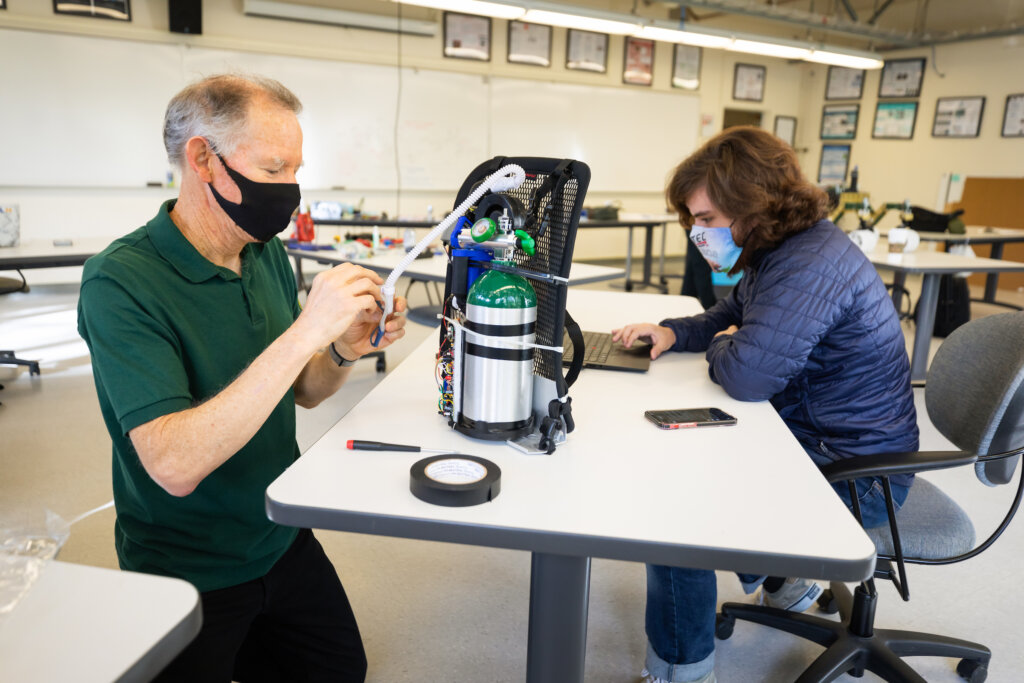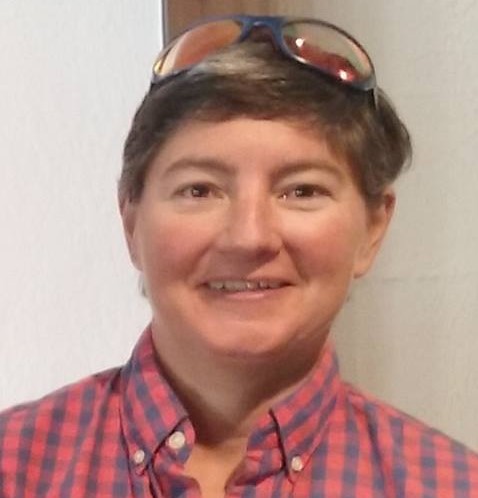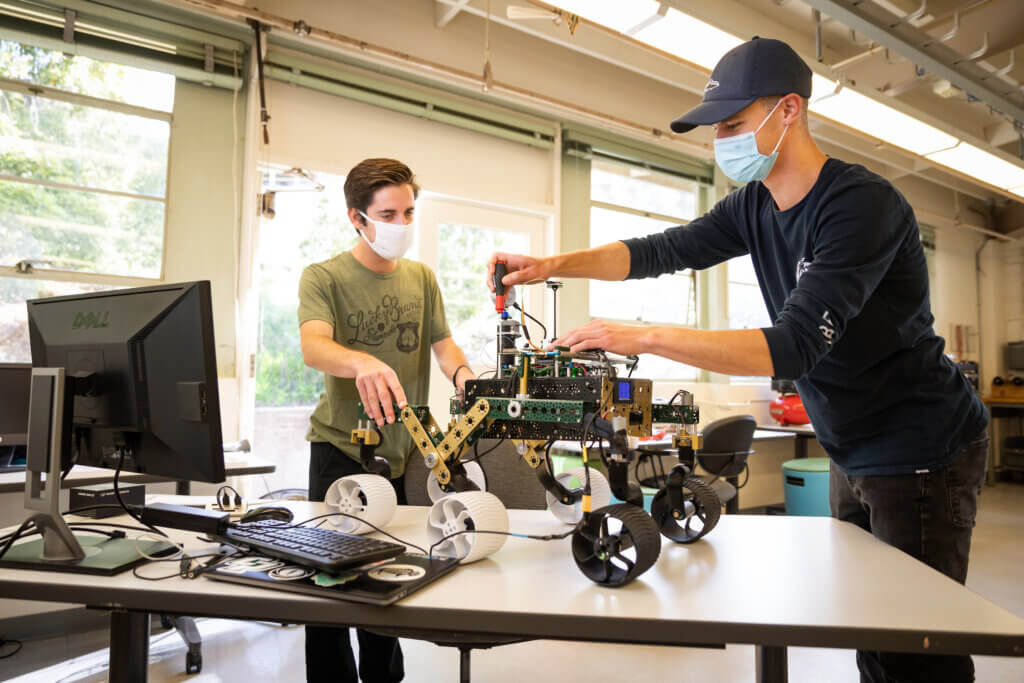
For incoming students, the computer engineering program’s transformation to department status was visually evident even before fall classes began, when more CPE faculty were available during Week of Welcome events. And as the school year continues, those students will likely notice more changes, which are expected to help develop a greater sense of identity while allowing the department a greater ability to adapt to rapid industry changes.
“Starting a department is a rare opportunity,” said Lynne Slivovsky, the former program director and now department chair. “Some people would say it’s been a long time coming.”
The computer engineering (CPE) program was created in 1988, under the umbrella of two departments: Electrical Engineering (EE) and Computer Science and Software Engineering (CSSE)
“Thirty years ago, when the program started, it was a very new field, and there were computer engineering degrees popping up around the country,” Slivovsky said. “But the field has evolved, as has the program.”

Today, there are roughly 500 students in the new department, which was recently ranked second in the nation by the U.S. News & World Report.
“The reputation of our computer engineering degree is outstanding,” said College of Engineering Dean Amy S. Fleischer. “However, because the industry is expanding so quickly, we need to make curriculum innovation easier so we can continue to lead.”
As a program, computer engineering had to navigate multiple departments and three curriculum committees for decisions related to policies, hirings, scheduling and courses.
“There was definitely an issue around identity and a sense of belonging,” Slivovsky said.
The process of transforming CPE to a department included faculty and staff from CPE as well as the EE and CSSE departments, open forums with an outside moderator, department discussions at retreats, a 6-month working group facilitated by an outside moderator and a follow-on task force.
Leadership in the EE and CPE departments both supported the decision, made by Fleischer, to make CPE a department. It was also endorsed by Provost Cynthia Jackson-Elmoore and the Provost-Deans Council and approved the Academic Senate. Meanwhile, a detailed vision of the department was created by a department formation task force – a vision that will be more easily achieved with greater autonomy.
“They have developed a clear and compelling vision in which the Computer Engineering Department is a place where all understand and value computer engineering as being more than a sum of the traditional fields from which it grew, championing collaboration, inclusivity and equity in the field while offering a dynamic and agile curriculum that reflects the ever-changing nature of the field,” Fleischer said.
As a result of the change, now CPE will have dedicated faculty, whereas previously all CPE faculty also worked in either the EE or CSSE departments. As part of the transition, eight faculty members changed their tenure home from EE or CSSE to CPE.
“It’s really all about having a dedicated group of faculty for this group of students and being able to adapt to changes in the industry,” Slivovsky said.
John Oliver, a CPE faculty member who was program chair when the move to department status began in 2018, said some of the biggest changes in the industry in recent years have included artificial intelligence and security.
“When I started in 2007, there were computer viruses, but these were mostly a novelty,” he said. “Now that computer security breaches have been monetized, there is rarely a day where computer security is not in the news.”
When he began, Oliver added, artificial intelligence was more of an academic pursuit.
“Industry has now taken to using AI for a wide array of solutions,” he said. “Under the old CPE structure, I don’t think these are topics we could have tried to move into because we had to also satisfy the EE Department. Now that we have more autonomy, CPE must become more resourceful in making sure that faculty stay up to date on these developments.”
The change will also help the other two departments, said Dale Dolan, interim co-chair of the Electrical Engineering Department.
“A new, vibrant CPE Department will create space for innovation, research and collaboration,” he said. “This can also be seen as a positive for the EE Department in that it will allow for EE to develop and create its own future on new directions in the electrical engineering field.”
The move is also expected to improve student engagement after graduation and improve industry support. With a clear vision, greater sense of identity, dedicated labs and research space, Slivovsky said, it will be easier request support from industry. Specifically, she hopes industry will support labs, projects, initiatives related to Justice, Equity, Diversity and Inclusion, and the Summer Undergraduate Research Program.
“All of these things will provide our students with a better educational experience,” she said.


